Cuba’s tourism and attractions beckon with a blend of history, culture, and natural beauty, and SIXT.VN is your ideal partner for unlocking the best experiences this Caribbean island has to offer. From the vibrant streets of Old Havana to the pristine beaches of Varadero, we provide seamless travel solutions to make your Cuban adventure unforgettable. Discover the magic of Cuba, explore its attractions, and let us take care of the logistics, offering expert travel guidance, reliable airport transfers, and a curated selection of hotels and tours, ensuring a smooth and immersive journey.
1. What Makes Old Havana (Habana Vieja) a Must-See Attraction in Cuba?
Old Havana, or Habana Vieja, a UNESCO World Heritage site, provides a deep dive into Cuban history with its well-preserved architecture. Strolling its cobblestone streets, you can admire grand Baroque and neoclassical buildings that evoke the life of Cuba 200 years ago.
Extensive renovations are breathing new life into its historic buildings, making attractions like Plaza de la Catedral, home to the Cuban Baroque Catedral de San Cristobal, more appealing than ever. Don’t miss the legendary Bodeguita del Medio, a favorite of Hemingway’s, and the historic military fortress, Castillo de la Real Fuerza.
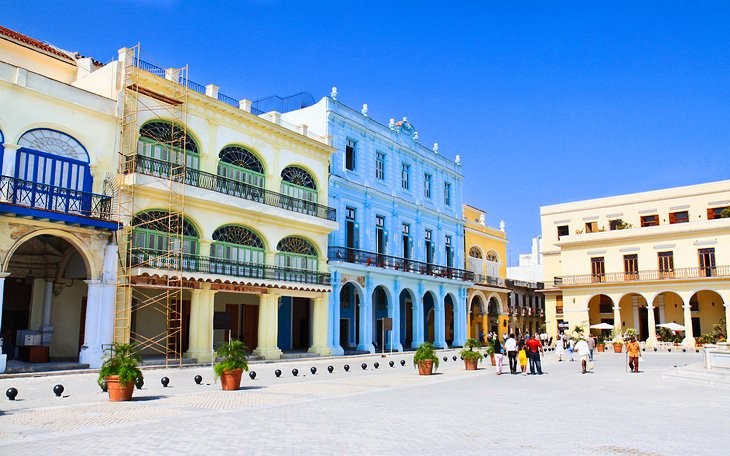 Plaza Vieja in Old Havana, Cuba, showcasing the restored colonial architecture and vibrant atmosphere
Plaza Vieja in Old Havana, Cuba, showcasing the restored colonial architecture and vibrant atmosphere
Plaza Vieja stands out as one of the most vibrant gathering spots, featuring notable buildings like the 18th-century Casa del Conde Jaruco with its beautiful stained-glass windows. For panoramic views, visit the camera obscura in a 35-meter tower. Exploring Old Havana is best done by wandering its streets, where you’ll find colorful photo opportunities, from pastel buildings to vintage cars. According to UNESCO, cultural heritage sites like Old Havana contribute significantly to tourism revenue, with a 15-20% increase in visitor spending compared to non-heritage destinations. Allow at least a day to fully explore this historic area.
2. Why Is Varadero One of Cuba’s Most Famous Beach Destinations?
Varadero is renowned as one of Cuba’s premier beach destinations, boasting some of the finest beaches in the Caribbean. Located on the Peninsula de Hicacos, it features over 50 beach resorts along a stunning, palm-fringed coastline. A drawbridge connects the peninsula to the mainland, making it easily accessible.
Highlights include Parque Ecológico Varahicacos (Varadero Ecological Park), with its fascinating caves like Cueva de Ambrosio and Cueva de Musulmanes. According to a report by the Cuban Ministry of Tourism, Varadero attracts approximately 1.2 million tourists annually, contributing significantly to the country’s economy.
For more subterranean adventures, Saturno Cave offers a cool retreat with its crystal-clear cenote, giant stalactites, and stalagmites. At Parque Josone, you’ll find lush flower gardens, a restaurant, a swimming pool, and a lake for rowboating. Besides diving and snorkeling, popular activities include deep-sea fishing, golfing, skydiving, and cultural day trips.
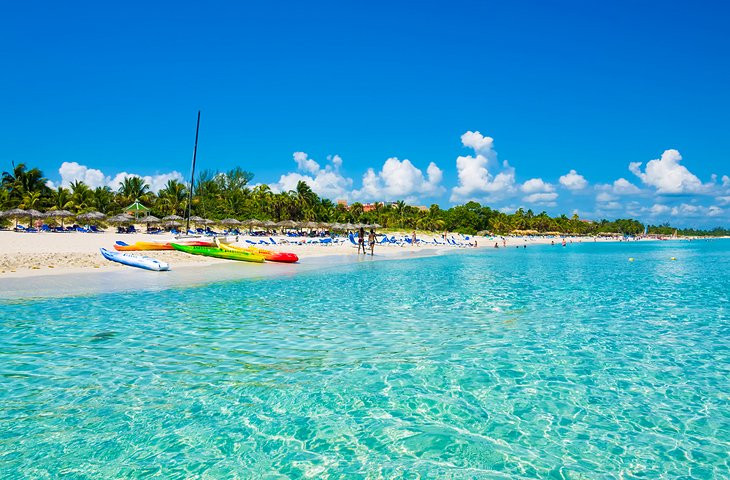 A panoramic view of Varadero beach, highlighting its white sand, turquoise waters, and palm-fringed resorts
A panoramic view of Varadero beach, highlighting its white sand, turquoise waters, and palm-fringed resorts
3. What Colonial Charms Does Trinidad Offer to Visitors?
Exploring Trinidad, Cuba, a UNESCO World Heritage Site, feels like stepping back in time. Its beautifully restored buildings and cobblestone streets exude a quaint colonial atmosphere. Much of the architecture dates from the 17th to 19th centuries, when Trinidad thrived on the sugar and slave trades.
Trinidad’s lively ambiance can be best appreciated in the cobblestone Plaza Mayor, the city’s central square. Above the square stands the neoclassical Church of the Holy Trinity (Iglesia Parroquial de la Santisima Trinidad). According to a study by the World Tourism Organization, heritage tourism in cities like Trinidad boosts local economies by preserving historical sites and attracting cultural enthusiasts.
Other highlights include the Church and Monastery of Saint Francis (Iglesia y Convento de San Francisco), with its distinctive bell tower, and the Palacio Brunet, a grand home built in 1812 with original frescoes and marble floors.
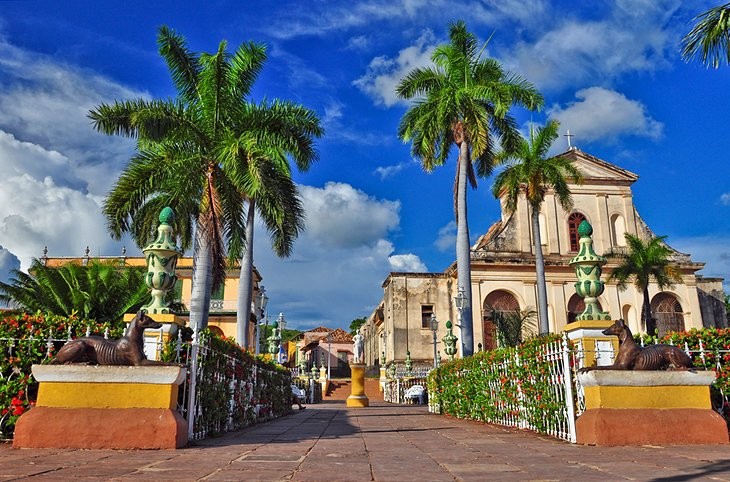 A cobblestone street in Trinidad, Cuba, showcasing the colorful colonial architecture and classic cars
A cobblestone street in Trinidad, Cuba, showcasing the colorful colonial architecture and classic cars
East of Trinidad, the Valle de los Ingenios, a lush World Heritage site, features numerous relics and monuments from the 19th century, when sugar cane plantations flourished. Driving or horseback riding through the green sugar cane fields, palm trees, and mountains is a must-do activity.
4. Why Is Guardalavaca a Good Alternative to Varadero?
Guardalavaca, in the Holguin province, offers a quieter and more remote beach experience compared to Varadero. Its glittering beaches are fringed by lush foliage, providing shady spots to escape the tropical sun. Divers and snorkelers can explore the vibrant sea life along the coral reefs.
Day trips from Guardalavaca include jungle adventures, sailing trips, and sightseeing tours of Santiago de Cuba. According to the Cuban Tourist Board, Guardalavaca is increasingly popular among tourists seeking a more tranquil and nature-focused vacation.
West of Guardalavaca, Bahia de Naranjo includes a large slice of coast and three islands, including Cayo Naranjo with the popular Dolphinarium. Chorro de Maita, with a native Indian burial area and a recreated Taino Indian village, is another interesting side trip option.
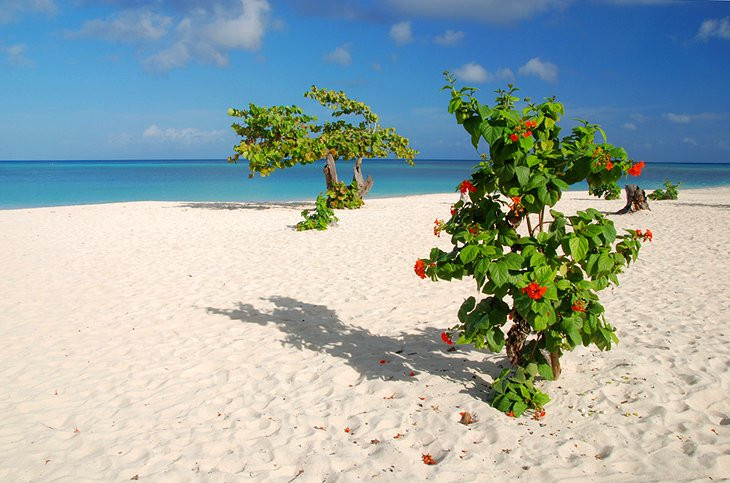 A serene view of Guardalavaca beach in Cuba, highlighting its lush greenery and clear waters
A serene view of Guardalavaca beach in Cuba, highlighting its lush greenery and clear waters
5. What Makes Playa Paraíso (Paradise Beach) on Cayo Largo del Sur Special?
Playa Paraíso, or Paradise Beach, on the island of Cayo Largo del Sur, is known as one of Cuba’s best beaches. It features powdery white sand and baby blue sea, skirting the sheltered western edge of the island and merging with Playa Sirena.
Cayo Largo del Sur is a sun seeker’s destination with a dry, sunny climate and attractions centered around its beautiful beaches, hotels, and resorts. According to travel reviews on TripAdvisor, Playa Paraíso consistently ranks as a top beach destination due to its pristine conditions and tranquil environment. Note that some sections of these beaches are clothing optional.
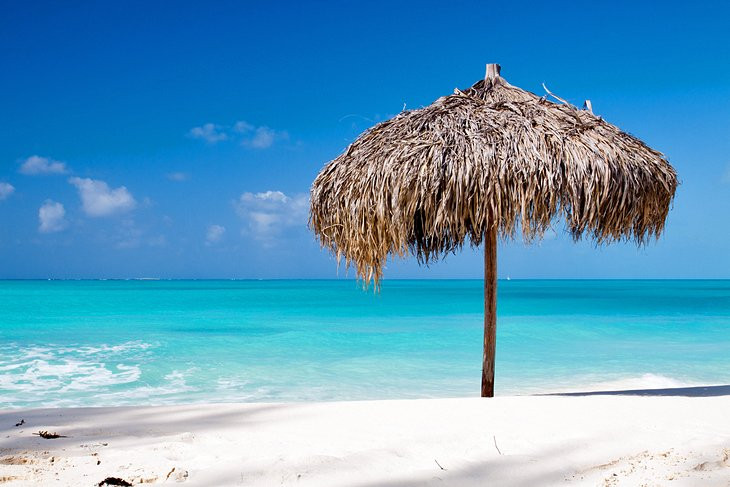 A pristine view of Playa Paraíso on Cayo Largo del Sur, highlighting its white sand and clear blue waters
A pristine view of Playa Paraíso on Cayo Largo del Sur, highlighting its white sand and clear blue waters
6. What Attractions Does Cayo Coco Offer Beyond Beaches?
Cayo Coco, another of Cuba’s idyllic beach destinations, offers a sense of isolation and natural beauty. Part of the Jardines del Rey archipelago, it is connected to the mainland by a bridge, though most visitors arrive by air. According to Hemingway’s novels, Cayo Coco is one of the most beautiful islands in Cuba.
Beaches are the main attraction, with Playa Los Flamencos standing out with its five-kilometer strand of sun-bleached sand. The quiet and undeveloped Playa Prohibida offers a peaceful nature trail. The island is also known for its excellent birding opportunities. According to a report by the Cuban Ministry of Tourism, Cayo Coco is also increasingly popular for birdwatching and ecotourism, attracting nature enthusiasts from around the world.
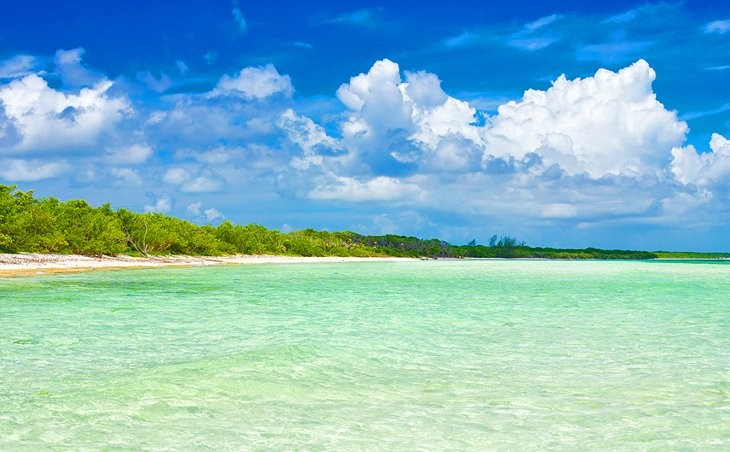 A scenic view of Cayo Coco, showcasing its white sand beaches and clear turquoise waters
A scenic view of Cayo Coco, showcasing its white sand beaches and clear turquoise waters
Connected by a causeway, Cayo Guillermo boasts beautiful beaches like Playa Pilar, along with all-inclusive resorts.
7. Why Is Parque Nacional Viñales (Valle de Viñales) a UNESCO World Heritage Site?
The Parque Nacional Viñales, a UNESCO World Heritage Site, is a verdant valley in the Sierra de los Organos, north of Pinar del Rio. Steep limestone hills, called mogotes, create a dramatic landscape, and the valley floors are agricultural areas where tobacco, fruit, and vegetables are grown.
The park offers fantastic hiking and horseback riding, as well as tours of coffee plantations, caves, and opportunities for rock climbing or ziplining. According to UNESCO, the Viñales Valley is a prime example of a karst landscape where traditional methods of agriculture, particularly tobacco growing, have been preserved for centuries.
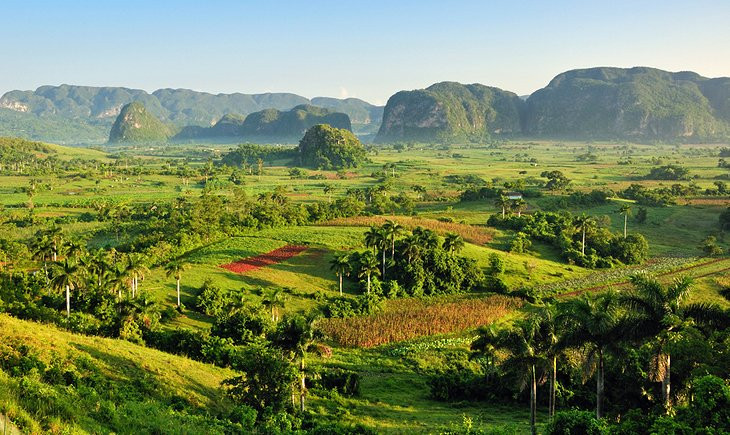 A scenic view of Parque Nacional Viñales, highlighting the mogotes and lush greenery
A scenic view of Parque Nacional Viñales, highlighting the mogotes and lush greenery
The charming town of Viñales is a great base for exploring the area, with tour companies offering day trips from Havana.
8. What Unique Aspects Make Baracoa Worth Visiting?
Baracoa, the oldest city in Cuba, was founded in 1511 in the province of Guantanamo. Cut off from the outside world until the 1960s, it retains a remote feel. Today, visitors come for its colonial architecture and lush countryside, with waterfalls and beaches providing a counterpoint to the jungle.
El Yunque, a flat-topped peak, presides over the tropical beauty, beckoning hikers to its 589-meter summit. The hillside is a UNESCO Biosphere Reserve with rare birds and plants. According to the Cuban Ministry of Culture, Baracoa’s isolation has helped preserve its unique cultural traditions and natural environment, making it a distinct destination for cultural and eco-tourism.
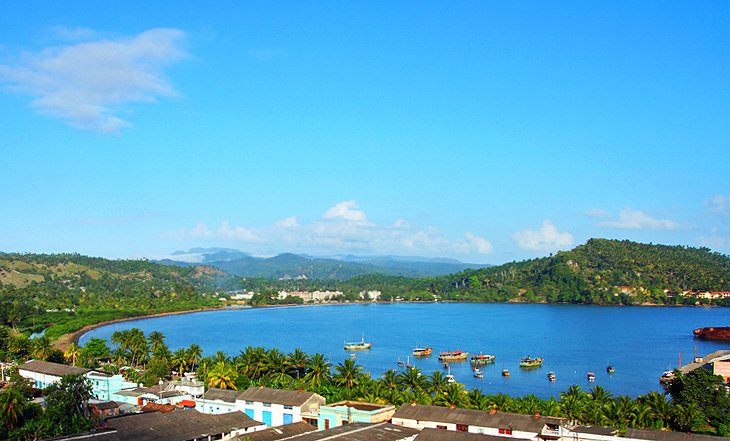 A view of Baracoa, Cuba, showcasing its colonial architecture and the El Yunque mountain in the background
A view of Baracoa, Cuba, showcasing its colonial architecture and the El Yunque mountain in the background
To appreciate the scenery, drive down the winding La Farola highway, a 49-kilometer stretch from Baracoa over the mountains to Cajobabo. The Museo Municipal, housed in the Fuerte Matachin military fortress, offers a glimpse of Baracoa’s history and great views over the bay. Playa Maguana, about 20 kilometers northwest, is one of the area’s best beaches.
9. Why Is The Malecon in Havana a Popular Attraction?
The Malecon, Havana’s famous seafront promenade, conceived in 1901, offers a stroll through the city’s history. It runs seven kilometers from the Habana Vieja quarter to the Vedado, featuring well-preserved 20th-century buildings in Art Deco and Neo Moorish styles, painted in pastel colors.
People-watching is a favorite pastime here, with young lovers, local fishermen, and children enjoying the sea wall. According to a study by the University of Havana, the Malecon serves as a significant social and cultural space, attracting both tourists and locals and fostering a sense of community.
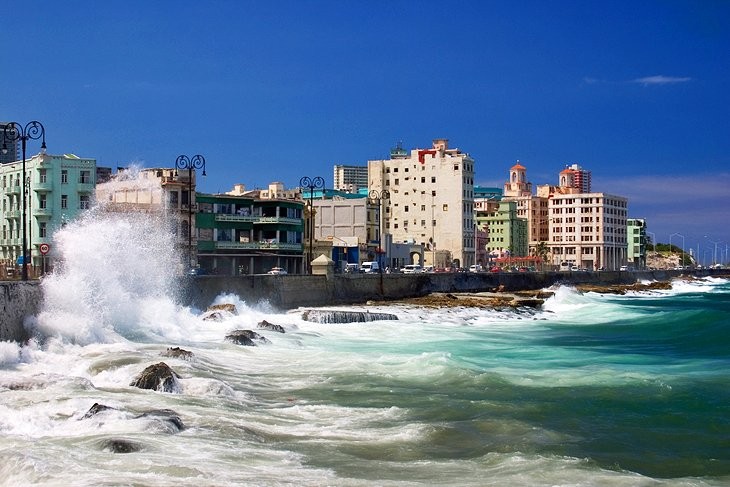 The Malecon in Havana, Cuba, showcasing the colorful buildings and classic cars along the waterfront
The Malecon in Havana, Cuba, showcasing the colorful buildings and classic cars along the waterfront
10. What Is the Significance of the Che Guevara Mausoleum in Santa Clara?
Santa Clara is famous as the site of Che Guevara’s last guerrilla battle in 1958. Che’s body was laid to rest here, and the Mausoleo del Che Guevara and Memorial Comandante Ernesto “Che” Guevara are major attractions.
Etched on the bronze statue of Che Guevara in Plaza de la Revolucion is his final letter to Fidel Castro, with the mausoleum lying beneath. The Museo Historico de la Revolucion exhibits Che’s personal items. The Monumento a la Toma del Tren Blindado marks the site of the final battle between Che Guevara and the Batista troops. According to historical records, the Che Guevara Mausoleum is a major pilgrimage site for those interested in the Cuban Revolution and Che’s legacy.
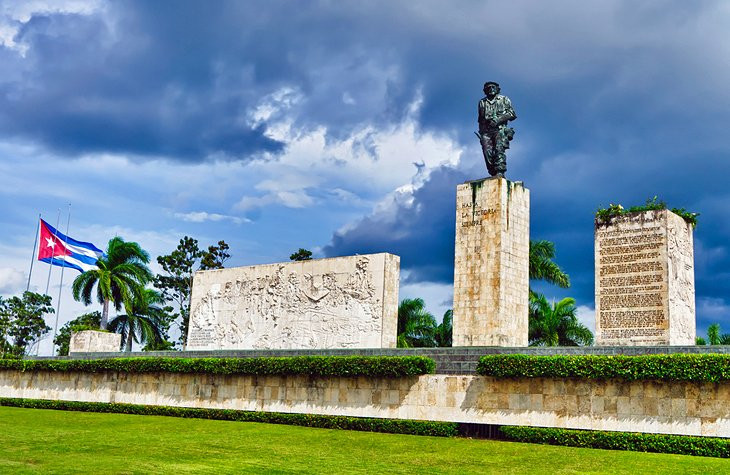 The Che Guevara Mausoleum in Santa Clara, Cuba, featuring the bronze statue and memorial plaza
The Che Guevara Mausoleum in Santa Clara, Cuba, featuring the bronze statue and memorial plaza
11. What Can Visitors Expect at the Museo Nacional de Bellas Artes?
Havana’s Museo Nacional de Bellas Artes (National Museum of Fine Arts) houses a vast collection of international and Cuban art from ancient times to the present. The collection is housed in two buildings: the restored Spanish Renaissance-style Palacio del Centro Asturiano, displaying international art, and the Rationalist-style Palacio de Bellas Artes, focusing on Cuban Art from the 17th century to the present.
According to art historians, the Museo Nacional de Bellas Artes is considered one of the most important cultural institutions in Cuba, offering a comprehensive overview of Cuban and international art history.
Palacio de Bellas Artes Address: Trocadero Street e/Zulueta y Monserrate, Old Havana
Palacio del Centro Asturiano Address: San Rafael, e/Zulueta y Monserrate, Old Havana
12. Why Is Castillo de San Pedro del Morro in Santiago de Cuba a UNESCO Site?
Castillo del Morro, a UNESCO World Heritage Site, is one of the best-preserved Spanish fortresses of the 17th century. It stands at the entrance to the Bay of Santiago, about 10 kilometers southwest of Santiago de Cuba.
Originally designed in 1587 to protect against pirate attacks, it also served as a prison. Today, you can explore the fort, learn about its history in the small museum, and enjoy views over the bay. According to UNESCO, Castillo del Morro is a significant example of Spanish colonial military architecture, reflecting the strategic importance of Santiago de Cuba in the Caribbean.
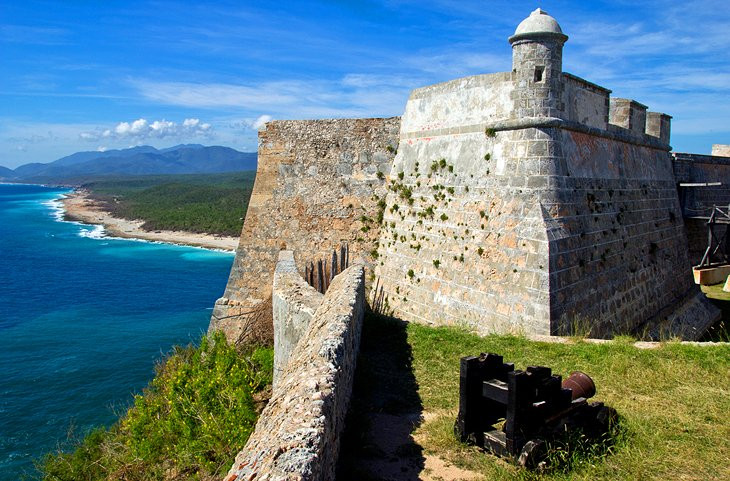 A view of Castillo de San Pedro del Morro in Santiago de Cuba, showcasing its historical architecture and strategic location
A view of Castillo de San Pedro del Morro in Santiago de Cuba, showcasing its historical architecture and strategic location
Other highlights of Santiago de Cuba include the Diego Velazquez Museum and Cementerio de Santa Ifigenia. Parque Baconao, a World Heritage Biosphere Reserve, offers coffee plantations and botanical gardens.
13. What Makes Peninsula de Zapata (Ciénaga de Zapata) a Unique Natural Reserve?
The Peninsula de Zapata, a remote area with diverse landscapes, is one of the largest wetlands in the Caribbean. The Cienaga de Zapata, a UNESCO Biosphere Reserve, is home to about 150 bird species, including waterhens, parrots, and herons, as well as crocodiles.
The Gran Parque Natural de Montemar is a designated nature reserve where you can see these creatures in their habitats. According to the UNESCO Biosphere Reserve directory, the Ciénaga de Zapata is crucial for biodiversity conservation, supporting a wide range of endemic species and playing a vital role in regional ecological balance.
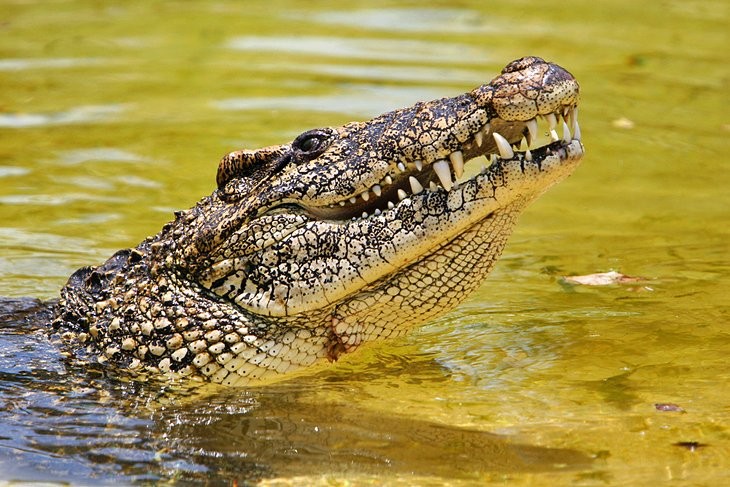 A scenic view of the Peninsula de Zapata, showcasing the lush wetlands and diverse ecosystems
A scenic view of the Peninsula de Zapata, showcasing the lush wetlands and diverse ecosystems
Playa Giron, at the mouth of the Bay of Pigs, is the site of the 1961 Bay of Pigs Invasion, with the Museo Giron exploring this history. Playa Larga features a long beach backed by lush vegetation, and numerous dive sites. Boca de Guama’s main attraction is the Criadero de Cocodrilos, a crocodile farm.
14. Why Should Nature Lovers Visit El Nicho Waterfalls?
El Nicho waterfalls, about a 90-minute drive from Trinidad or Cienfuegos, in Parque El Nicho, offer a stunning natural escape. These multi-tiered falls flow into jade-green jungle pools, perfect for a cool dip.
The drive along twisty roads is an adventure in itself. A 1.5-mile palm-lined trail leads to the park’s scenic spots, meandering along a river and through tropical forest to the falls. You can swim and sunbathe, and look out for the tocororo, Cuba’s national bird, and the royal palm. According to local tourism guides, El Nicho waterfalls are a hidden gem in central Cuba, offering a refreshing and picturesque experience for nature lovers.
Beyond the falls, a scenic lookout offers views across lush valleys. The waterfalls gush year-round, even in the dry season.
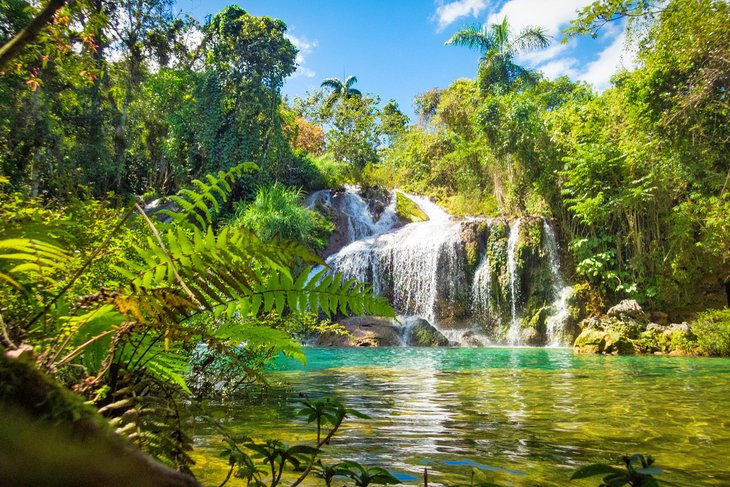 Poceta de Cristal in El Nicho National Park, Cuba, showcasing the clear waters and lush surroundings
Poceta de Cristal in El Nicho National Park, Cuba, showcasing the clear waters and lush surroundings
15. What Historical Significance Does Parque Historico Militar in Havana Hold?
The Parque Historico Militar includes the Castillo de los Tres Reyes del Morro (El Morro) and Fortaleza de San Carlos de la Cabana, guarding the entrance to the Bay of Havana.
El Morro, built in the late 16th and early 17th centuries to fend off pirates, retains its original appearance. You can ascend to admire views of the ocean and city. Fortaleza de San Carlos de la Cabana, built in the 1770s, was the biggest and most expensive fort the Spanish ever built. It became a military prison and later Che Guevara’s headquarters after the Revolution. According to historical records, the Parque Historico Militar represents a significant period in Cuban history, reflecting the island’s strategic importance in the Caribbean and its role in colonial and revolutionary conflicts.
You can explore the museums and watch Ceremonia del Cañonazo, a cannon-firing ceremony, at 9pm.
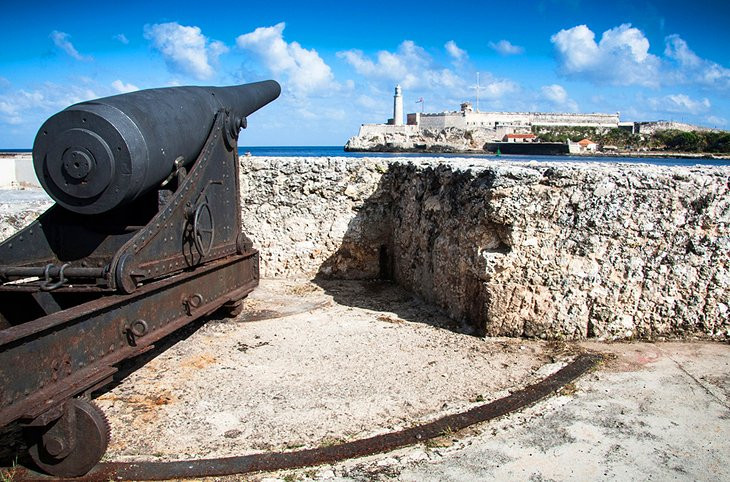 Parque Historico Militar in Havana, Cuba, featuring El Morro fortress overlooking the bay
Parque Historico Militar in Havana, Cuba, featuring El Morro fortress overlooking the bay
16. Why Is Plaza de la Revolucion (Jose Marti Memorial) a Significant Place in Havana?
The Plaza de la Revolucion, due to its important place in Havana’s history, deserves a stop to absorb the events that transpired here. Castro delivered speeches in this vast square, attracting over a million people. In 1998, Pope John Paul II celebrated mass here.
A 109-meter gray tower stands in the center, a memorial to Jose Marti, with a marble statue at its base. The Jose Marti Memorial contains a museum on Marti, and the tower offers views over Havana. According to the Cuban government, the Plaza de la Revolucion symbolizes the spirit of the Cuban Revolution and serves as a place of national pride and remembrance.
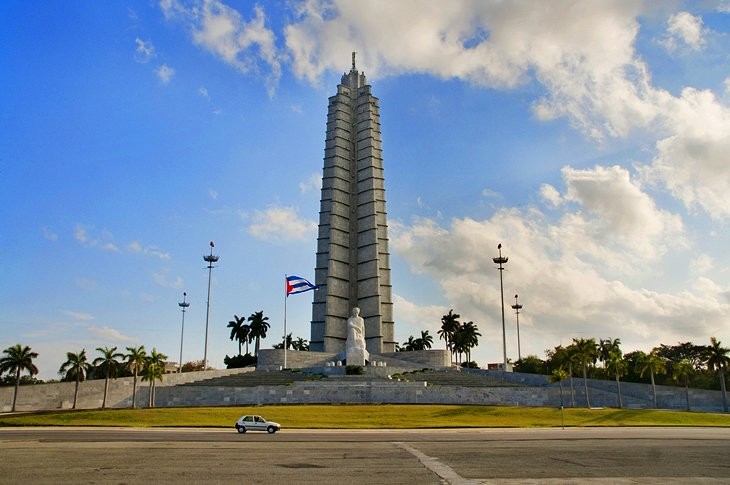 Plaza de la Revolucion in Havana, Cuba, featuring the Jose Marti Memorial and surrounding buildings
Plaza de la Revolucion in Havana, Cuba, featuring the Jose Marti Memorial and surrounding buildings
Opposite the memorial, the portrait of Che Guevara adorns the Ministry of Interior building, a popular spot for photos.
17. What Makes Fusterlandia a Unique Artistic Destination in Havana?
Fusterlandia is a neighborhood transformed by local artist José Fuster, known as the Picasso of the Caribbean. Located a 30-minute drive from Havana, it features mosaics, paintings, and sculptures in every color.
Fuster decorated local bus shelters and his neighbors’ homes, creating a reflection of his life and art. According to art critics, Fusterlandia is a testament to the power of community art, transforming a regular neighborhood into a vibrant cultural landmark that attracts visitors from around the world.
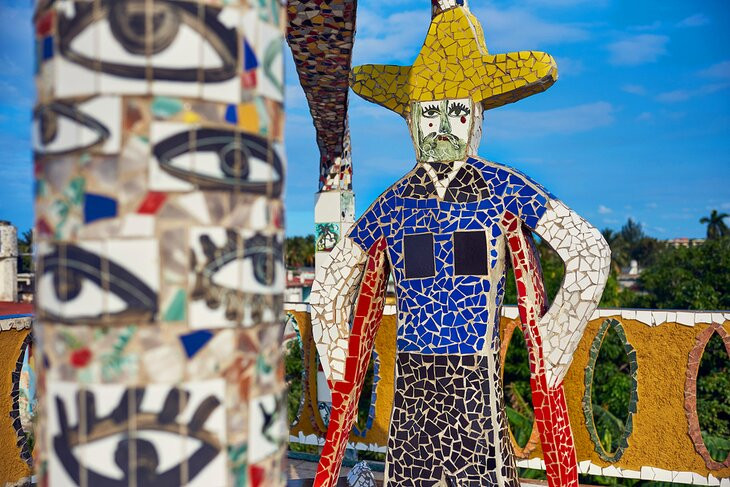 A colorful mosaic-covered building in Fusterlandia, Havana, Cuba, showcasing the unique artistic style of José Fuster
A colorful mosaic-covered building in Fusterlandia, Havana, Cuba, showcasing the unique artistic style of José Fuster
Many Havana tours include a visit, and you can also take the hop-on, hop-off tourist bus or a classic car tour.
FAQ about Cuba’s Tourism and Attractions
-
What are the best times to visit Cuba? The best time to visit Cuba is during the dry season, from November to April, when the weather is pleasant and there is less rainfall.
-
Do I need a visa to travel to Cuba? Yes, most travelers need a tourist card or visa to enter Cuba. It is best to check the specific requirements based on your nationality.
-
What currency is used in Cuba? Cuba has two official currencies: the Cuban Convertible Peso (CUC) and the Cuban Peso (CUP). Tourists primarily use CUC.
-
Is it safe to travel to Cuba? Cuba is generally considered a safe country for tourists, with low crime rates. However, it’s always wise to take standard safety precautions.
-
What are some popular dishes to try in Cuba? Popular Cuban dishes include Ropa Vieja (shredded beef), Arroz con Pollo (rice with chicken), and Tostones (fried plantains).
-
How can I get around in Cuba? You can get around Cuba by taxi, bus, train, or rental car. Taxis are readily available in major cities. SIXT.VN can help you arrange reliable transportation.
-
Are credit cards widely accepted in Cuba? Credit card acceptance is limited in Cuba, especially cards issued by American banks. It’s best to bring cash (Euros or Canadian dollars) and exchange it for CUC.
-
What should I pack for a trip to Cuba? Pack light clothing, comfortable shoes, sunscreen, insect repellent, a hat, and any necessary medications.
-
Are there any cultural etiquette tips I should know? It’s respectful to dress modestly when visiting religious sites. Tipping is customary in restaurants and for other services.
-
Can SIXT.VN help me plan my trip to Cuba? Yes, SIXT.VN offers comprehensive travel solutions, including travel guidance, reliable airport transfers, and curated hotel and tour selections, ensuring a smooth and immersive journey in Cuba.
Ready to explore the captivating beauty and culture of Cuba? Let SIXT.VN be your trusted travel partner. We offer seamless solutions for travel guidance, airport transfers, hotel bookings, and curated tour experiences. Contact us today at Address: 260 Cau Giay, Hanoi, Vietnam. Hotline/Whatsapp: +84 986 244 358. Website: SIXT.VN and start planning your unforgettable Cuban adventure!



